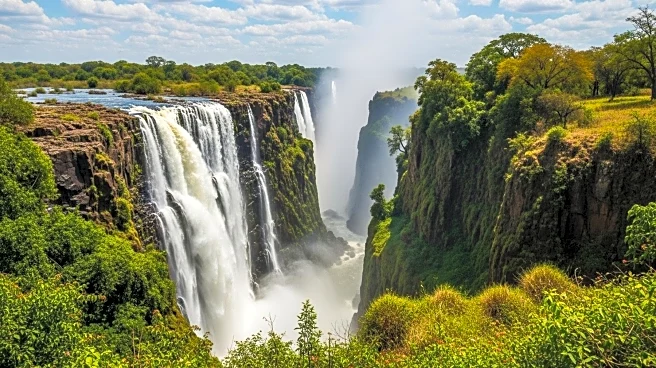What's Happening?
Gemfields has announced the discovery of the largest emerald ever mined at its Kagem Mining operation in Zambia. The emerald, named Imboo, weighs 11,685 carats and was discovered on August 3 by geologist Dharanidhar Seth and chiseller Justin Banda. The gemstone was auctioned on September 11, with proceeds repatriated to Zambia. The discovery highlights the expertise of Kagem's team, who use hand-based extraction techniques to preserve the crystal's integrity and minimize environmental impact. Imboo is expected to produce several fine-quality cut emeralds, potentially forming a high jewelry suite. The geological setting of Imboo's discovery is a classic example of the Tri-Junction Model, conducive to forming large-sized crystals.
Why It's Important?
The discovery of Imboo is significant for the global gemstone market, as it represents a rare and high-quality find that could influence emerald prices and demand. The auction proceeds contribute to Zambia's economy, showcasing the country's potential as a major player in the gemstone industry. The expertise demonstrated in the extraction process underscores the importance of sustainable mining practices, which are increasingly valued by consumers and industry stakeholders. The naming of Imboo follows a tradition reserved for exceptional gems, enhancing its prestige and potential as an investment piece.
What's Next?
The successful auction of Imboo may lead to increased interest in Zambian emeralds, potentially boosting tourism and investment in the region. Gemfields may continue to explore the Tri-Junction Model for future discoveries, leveraging their expertise in sustainable mining practices. The gemstone's new owner might choose to showcase it in high-profile jewelry collections, further elevating its status and market value.
Beyond the Headlines
The discovery of Imboo highlights the cultural significance of gemstone naming traditions in Zambia, reflecting local languages and heritage. The focus on sustainable extraction methods aligns with global trends towards environmentally responsible mining, which could influence industry standards and consumer preferences. The find also underscores the geological richness of Zambia, potentially attracting further exploration and investment in the region.











